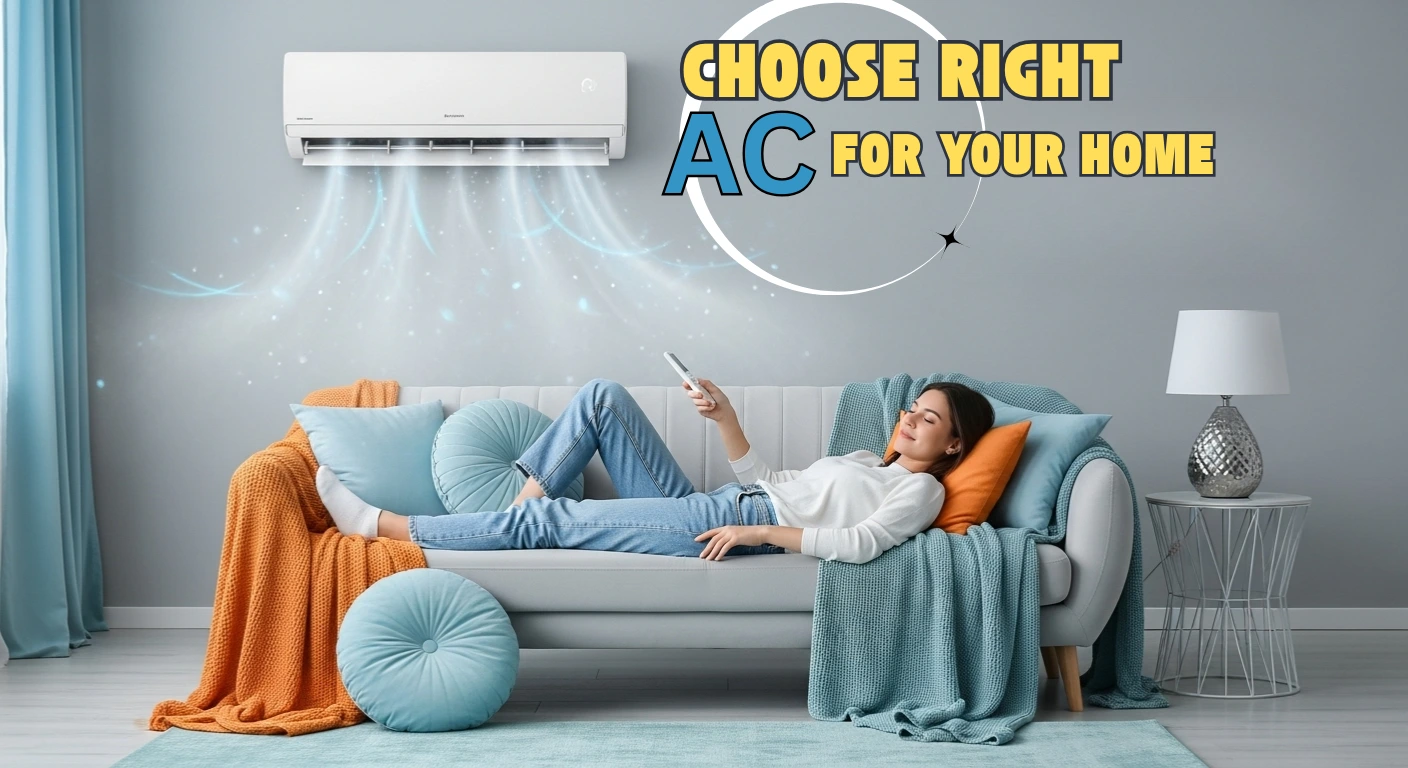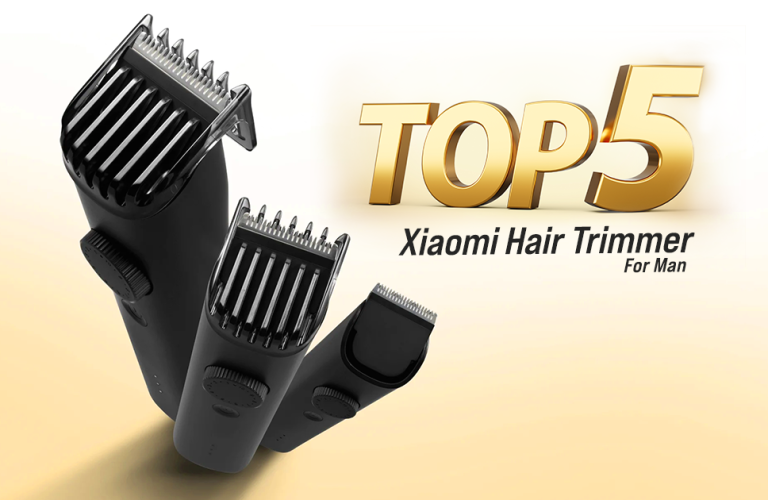Air Conditioner Buying Guide
Heat in Bangladesh is becoming unbearable day by day. People are desperately looking for cooling solutions; not just in their offices anymore, but in their homes too. Walk around any neighborhood and you’ll see families installing 2 or even 3 ACs throughout their houses. This is completely understandable given the extreme temperatures we’re dealing with.
If you’re reading this, chances are you’re in the same boat; sweating through another scorching day and finally ready to invest in an air conditioner for your home or office. But here’s where things get tricky.
Step into any electronics store or scroll through online shopping sites and you’ll be hit with an overwhelming wall of options. Split ACs, window units, inverter models, non-inverter ones, different BTU capacities, energy ratings, smart features – the choices seem endless.
With so many types of ACs packed with different features, it’s incredibly easy to get lost and end up making the wrong decision.
Should you go for the cheapest option available? Splurge on the most energy-efficient model? Pick the one loaded with smart features? And honestly, how do you even figure out what size AC you actually need for your space?
That’s exactly why I’ve put together this detailed buying guide. We’re going to break down everything you need to know before you spend your money on an AC purchase. From understanding the different types available in our market to calculating the perfect size for your room, from identifying truly useful features to avoiding costly mistakes – it’s all covered here.
Think of this guide as your personal AC buying checklist. By the time you finish reading, you’ll know exactly what to look for, which questions to ask sellers, and how to choose an air conditioner that’ll keep you comfortable without destroying your electricity bill.
Types of Air Conditioners
Let’s kick this guide off with the types of air conditioners that are available in the market at the moment.
Duct Style Air Conditioners
Starting off with the duct variants, there are mainly three types of duct air conditioners:
Split Systems
Ducted split systems are industrial-grade air conditioners where the indoor unit is completely hidden above the ceiling. Unlike regular split ACs that hang on walls, these systems keep all equipment out of sight.
The outdoor unit works like any split AC, but the indoor part is a powerful air handler tucked away in ceiling space. Cool air flows through ducts and comes out of ceiling or wall vents. You can also control its temperature and set airflow speeds.
These systems are used in commercial spaces like offices, shopping centers, restaurants, and hotels where you need strong cooling but need professional aesthetics. They’re also common in conference rooms, banquet halls, and upscale retail stores.
They run extremely quietly since all noisy equipment is hidden above the ceiling. One ducted split air conditioner system can cool multiple rooms or large open areas, making them much more powerful than home ACs. Perfect for places that need industrial-strength cooling without visible equipment cluttering the space.
Cassette Air Conditioners
Cassette ACs are very similar to split systems. These are also installed on the ceiling and stay out of sight blending in completely. However what sets them apart is their multiple vents.
Usually designed in a square shape, cassette air conditioners typically come with 4 vents with adjustable airflow directions. This makes sure the room is cooled evenly thanks to 4 vents. You can also control temperature settings, fan speed and others with a wireless remote or a wall mounted controller.
You will commonly see cassette air conditioners in office spaces, restaurants, conference rooms and commercial spaces. These ACs run very quietly since the main unit is above the ceiling. Plus the short ductwork makes sure that the air delivery is efficient throughout the room.
Plus the ability to fine tune temperature and airflow makes this type of air conditioner perfect for commercial spaces which need good cooling capacity without sacrificing aesthetics.
Central Air Systems
Central air systems use one powerful outdoor unit and a hidden air handler to push cool air through ducts. These air come out of vents placed in every room, making sure the same temperature is maintained throughout your house.
The best part about central air systems is that your full house has the same temperature, coming out of your room does not have to be a visit to hell anymore. And since the vents are small and they stay in your wall inconspicuously and blend in very easily.
Controlling them is also very straightforward, a single thermostat sets the temperature. One issue with this AC type is you cannot control airflow speeds as temperature is set globally, not in one specific room. This type of cooling system is perfect for homes or small offices.
Non-Duct Air Conditioners
Now that we have covered duct systems, let’s take a look at the much more common and used non-duct air conditioners.
Split Types
This is the most common and most bought type of air conditioner at the moment in Bangladesh. Chances are; any home that you visit will have one of these in their rooms. These are very small and are quite easy to install.
The installation process is almost non-destructive as you just need to drill a small hole to connect the copper pipe from the indoor unit to the outdoor unit. You can control its temperature with a remote.
You can further control its airflow speeds and direction, making it very versatile. Plus with some models coming with wireless capabilities, you can even control it with your phones. This makes split types perfect for small to large sized rooms.
Window AC
Chances are you have seen this AC in your grandparents’ house or in very old places. These air conditioners at the moment are like a blast from the past. They are very bulky and take a large amount of space.
Installing them is also very destructive as you will need to take out a large portion from the wall or window. They also do not have that many advanced features. It is often just temperature control and sometimes some of them might have airflow control as well.
These air conditioners are very reliable though. They can last 10-15 years very easily with minimal maintenance and once installed, you can be sure that your grandchildren will probably be reaping the benefits of air conditioners.
Portable AC
There are two types of portable ACs to better describe them and those are as followed:
Floor Standing Industrial Grade AC
Floor standing ACs are built for heavy-duty cooling where standard home units just won’t cut it. These powerful machines are placed directly on the floor and stand upright, with a large indoor unit blowing out strong, direct streams of cool air.
They’re usually paired with an outdoor unit, much like split systems, but deliver far more cooling power. What makes them stand out from others in this list is their capacity and power. A floor standing AC can handle big spaces like showrooms, banquet halls, restaurants, event venues, or large office floors where you have a large amount of people gather.
Instead of struggling to cool with multiple small units, one or two floor standing models can cover the area with ease. Their design might be a bit less friendly and does not blend well but this air conditioner is more about performance than aesthetics.
This is why you will see them mostly positioned in a corner or along walls where they can circulate air properly. If you need industrial-strength cooling for wide, open spaces with heavy foot traffic, a floor standing AC is the go-to choice. It’s not about style; it’s about reliable, powerful cooling.
Personal Portable Air Conditioners
Now if you are living in a sublet or do not have a permanent home yet or move around frequently – a personal, portable AC might be a good solution for you. These ACs are compact and do not need to be installed on a wall or a window.
You can easily move it around and take it around. These however do not have the cooling capacity to cool your entire room down but these can cool down a specific area very easily.
Let’s say you point it to your table while you are studying or point it to your bed while sleeping and you should be good to go.
If you spend most of your day in one spot and need a simple, portable way to stay cool, a personal AC is a smart choice. It’s practical, flexible, and made for keeping you comfortable, no matter how small your space is.
How to Calculate Your Cooling Needs
Now that you know the type of AC that you are going to buy, let’s check out the capacity that you will need for your room. One thing that you are going to find a lot while researching or looking for AC is BTU or British Thermal Unit. It is basically a unit of measurement for heat or energy.
A higher BTU means it can move more heat or in layman terms cool a larger area/space. Now choosing the right AC capacity requires considering some key factors. Which are –
- First calculate your room’s area (Width X Length) in Sq. Ft.
- You will need to consider a higher BTU if your ceiling is higher than 9 feets or if your room’s door or window will be frequently opened or if there are more people in the area where you are installing your AC
- If the room is not properly insulated there will be a higher load on the A/C
Below is an easy to follow chart that shows approximately how much BTU/Hr or ton of air conditioner you may need for your considered area:
| Room Size (Sq. Ft.) | Recommended BTU | Ideal AC Capacity (Ton) | Suitable For |
| 250 – 350 | 9,000 – 12,000 | 1 Ton | Master bedrooms, small living rooms |
| 350 – 600 | 12,000 – 18,000 | 1.5 Ton | Large bedrooms, lounges, compact offices |
| 600 – 900 | 18,000 – 24,000 | 2 Ton | Drawing rooms, medium halls, family zones |
| 900 – 1100 | 24,000 – 30,000 | 2.5 Ton | Studio flats, restaurants, commercial zones |
| 1100+ | 30,000+ | 2.5 Ton and above | Large offices, showrooms, big lounges |
By figuring out your cooling needs first, you’ll shop smarter, stay comfortable, and save on your electricity bill.
Key Features and Technologies to Consider
Walk into any electronics store and the salesperson will start throwing around terms like SEER ratings, inverter technology, smart connectivity, and variable speed compressors. It sounds impressive, but honestly, half of these features might be completely useless for what you actually need.
The thing is, not every fancy feature is worth your money. Some will genuinely save you cash on electricity bills and make your life more comfortable. Others are just marketing gimmicks that jack up the price without giving you any real benefit.
You need to know which technologies actually matter for your situation and which ones you can skip without missing out. That’s exactly what we’ll cover in this section – breaking down each feature in simple terms so you can decide what’s worth paying extra for and what’s just sales talk.
Energy efficiency ratings (SEER, EER, CEER)
You’ll see these three-letter codes on every AC label – SEER, EER, and CEER. Salespeople love to mention them, but most people have no clue what they actually mean or why they should care.
These ratings tell you how much cooling you get per unit of electricity consumed. Higher numbers mean lower electricity bills. SEER is for central air systems, EER is for room ACs like window units, and CEER is a newer rating that’s more realistic about actual usage.
Going from a basic efficiency rating to a high one can literally cut your monthly electricity bill in half. In Bangladesh’s hot climate where your AC will be running constantly, this difference adds up fast. A slightly more expensive, efficient AC can pay for itself within a year just through electricity savings.
Don’t get fooled by rock-bottom prices on inefficient models. Sure, they’re cheap upfront, but you’ll be cursing yourself every month when the electricity bill arrives. Look for higher ratings – your wallet will thank you later.
How Energy Efficiency Impacts Bills
Let’s talk about the real reason you should care about energy efficiency – your monthly electricity bill. You can find a cheap AC that cools your room perfectly, but if it’s guzzling electricity like a thirsty elephant, you’ll be paying for that “bargain” every single month for years.
Energy Star ratings are your best friend when AC shopping. These labels tell you exactly how much electricity an AC will consume annually. A 5-star rated AC uses significantly less power than a 1-star model of the same cooling capacity. In Bangladesh’s hot climate where your AC runs most of the year, this difference adds up fast.
Most people make the mistake of only looking at the sticker price. You see a non-inverter AC for 30,000 taka and a 5-star inverter model for 45,000 taka, so you go with the cheaper one thinking you’ve saved money. But that cheaper AC might cost you an extra 800-1,000 taka every month in electricity bills.
Do the math – if an efficient AC saves you 900 taka monthly, that extra 15,000 taka you spent upfront gets recovered in about 16-17 months. After that, you’re literally saving money every month for the next 8-10 years that AC will run.
Smart features and Wi-Fi connectivity
Smart ACs are everywhere now. Open any electronics store app and you’ll see “Wi-Fi enabled” and “app control” plastered all over. Sounds cool, but here’s the question – will you actually use it?
These smart ACs let you control everything from your phone. Stuck in traffic? Turn on the AC before you reach home. Lying in bed and too lazy to find the remote? Adjust temperature from your phone. Some even figure out your daily routine and start cooling automatically.
Look, if you’re the type who forgets to turn off the AC when leaving home, or you want to come back to a cool room without running the AC all day, then yes, it’s worth it. But if you’re fine with a regular remote and don’t mind the extra cost, skip it.
Air filtration and purification
AC manufacturers love to talk about their “advanced filtration systems” and “air purification technology.” They’ll show you fancy diagrams of multi-stage filters that supposedly clean your air better than a hospital. But how much of this actually matters?
Basic AC filters just catch dust and lint – nothing fancy, but they keep your AC’s internals clean. Then you have HEPA filters, carbon filters, and UV lights that promise to kill bacteria, remove odors, and purify your air like some medical device.
If you live in Dhaka or any major city in Bangladesh, better air filtration actually makes sense. The air quality is rough and spending hours in a room with cleaner air can genuinely help, especially if you have allergies.
Don’t get fooled by over-the-top marketing though. A decent multi-stage filter is useful, but you don’t need space-age technology. Just make sure replacement filters are easily available and affordable locally.
Inverter
You’ve probably heard everyone talking about inverter ACs lately. Walk into any electronics shop and the salesperson will immediately start pushing inverter models, claiming they’re way better than regular ACs. But what’s all the fuss about?
Your typical AC is like that friend who either talks non-stop or stays completely silent – there’s no in-between. It runs at full blast until your room is freezing, then shuts off completely. When things warm up again, it kicks back on at maximum power. This constant switching on and off is what kills your electricity bill.
Inverter ACs work more like a normal conversation. They adjust their cooling power based on what your room actually needs. Getting a bit warm? The AC gently increases its cooling. Perfect temperature? It keeps running quietly at just enough power to maintain that comfort level.
The payoff is real – you’re looking at 30-40% lower electricity bills, way less noise, and no more temperature swings that leave you shivering one minute and sweating the next. Yes, they cost more upfront, but most people recover that extra cost through electricity savings within their first year.
Non-inverter
Non-inverter ACs are the old-school, no-nonsense cooling machines your parents probably grew up with. Nothing fancy, no smart technology – just straightforward cooling that either runs full blast or stays completely off.
When you set your temperature, the AC waits for your room to get warm, then the compressor fires up at maximum power and runs until it hits your target temperature. Once it’s cool enough, everything shuts down completely. Room heats up again? The whole cycle repeats.
Why would anyone choose this over inverter technology? Simple – they’re way cheaper to buy. Plus, when something goes wrong, any local technician can fix them because they’ve been working on these basic systems for years. Spare parts are everywhere and won’t cost you a fortune.
The downside is obvious – your electricity meter will spin faster because of all that starting and stopping. They’re also louder since the compressor jolts to life at full power every time it kicks in. If you only use AC occasionally or you’re working with a really tight budget, non-inverter ACs still make sense for some people.
Bangladesh’s electricity rates aren’t getting any cheaper, and with load shedding issues, you want an AC that gives you maximum cooling for minimum power consumption. Sometimes spending more initially is actually the smartest financial move you can make.
Shopping Tips and What to Avoid
Now that you know about different ACs and what features to look for, here are some practical tips that’ll be useful while buying an AC from a store. Trust me, these can save you both money and headaches down the road.
Useful Tips:
- Look for discounts or stores which are running discount campaign
- Always ask “what’s the final price with everything included?” because they love hiding installation costs
- Visit 3-4 shops minimum – prices vary like crazy between stores
- Make sure they have service centers nearby, or you’re screwed when something breaks
- Get everything in writing – verbal promises disappear faster than your money
Avoid These Traps:
- Salespeople who immediately show you the most expensive unit “because it’s the best”
- Any deal that makes you think “this can’t be real” – because it probably isn’t
- Full advance payments before you see your actual AC
- Buying from shops that can’t show you the real unit
At Apple Gadgets, we understand how overwhelming AC shopping can be. Our experienced staff won’t push expensive models on you – instead, they’ll listen to your needs, room size, and budget to recommend what actually makes sense.
With years of experience in the electronics market, we know which brands deliver reliable performance and which ones to avoid. Visit our showroom where you can see the actual units, compare different models side by side, and get honest advice from people who genuinely want to help you make the right choice. You can also check out this blog to find out the best AC brands in the market right now.
Final Thoughts
If you’ve made it this far, you’re probably feeling way more confident about walking into an electronics store without getting bamboozled by sales talk. No more standing there confused while someone throws around terms like “inverter technology” and “SEER ratings” hoping you’ll just nod and buy whatever they’re pushing.
The heat in Bangladesh isn’t getting any easier to deal with, and you deserve an AC that actually works for your space and your wallet. Whether you end up with a simple split AC for your bedroom or go all out with a smart inverter model, you now know exactly what questions to ask and what features actually matter.
Remember that sweaty, frustrated feeling you had when you started reading this guide? That was the whole reason we put this together – so you wouldn’t have to guess your way through one of the biggest purchases you’ll make for your home comfort.
Your future self will thank you when you’re sitting in perfectly cool comfort while your neighbors are still complaining about sky-high electricity bills or ACs that can’t handle the heat. You’ve got the knowledge now – time to put it to good use and finally beat this unbearable weather once and for all.
Go get that AC and enjoy being cool and comfortable in your own space.

Adnan Rashed Khan is the Director of Apple Gadgets, known for his passion for creative technology solutions. He shares technical tips and tricks to enhance user experiences and streamline processes. Adnan’s innovative approach and commitment to excellence make him a leading figure in the tech industry.







